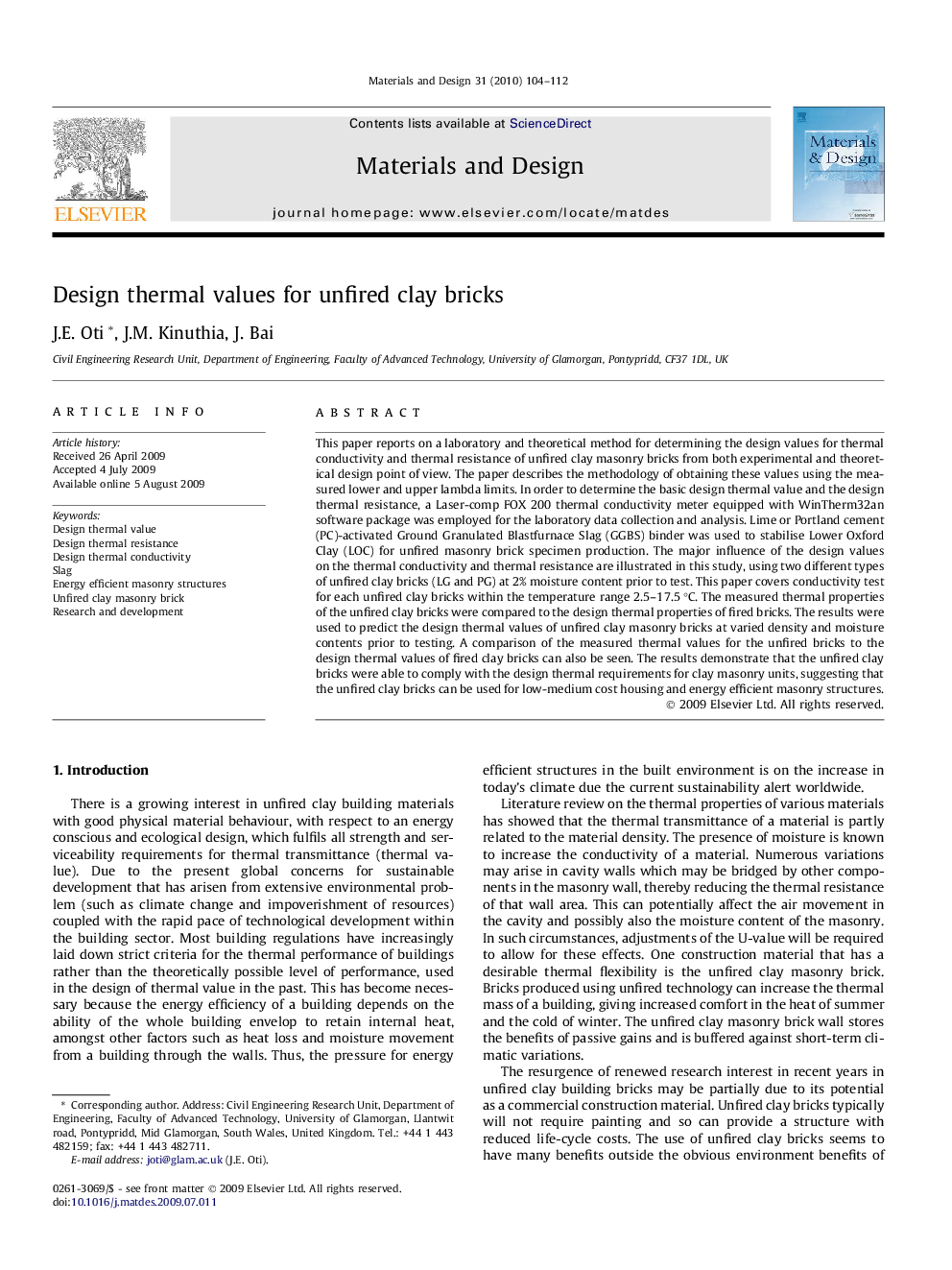| Article ID | Journal | Published Year | Pages | File Type |
|---|---|---|---|---|
| 832277 | Materials & Design (1980-2015) | 2010 | 9 Pages |
This paper reports on a laboratory and theoretical method for determining the design values for thermal conductivity and thermal resistance of unfired clay masonry bricks from both experimental and theoretical design point of view. The paper describes the methodology of obtaining these values using the measured lower and upper lambda limits. In order to determine the basic design thermal value and the design thermal resistance, a Laser-comp FOX 200 thermal conductivity meter equipped with WinTherm32an software package was employed for the laboratory data collection and analysis. Lime or Portland cement (PC)-activated Ground Granulated Blastfurnace Slag (GGBS) binder was used to stabilise Lower Oxford Clay (LOC) for unfired masonry brick specimen production. The major influence of the design values on the thermal conductivity and thermal resistance are illustrated in this study, using two different types of unfired clay bricks (LG and PG) at 2% moisture content prior to test. This paper covers conductivity test for each unfired clay bricks within the temperature range 2.5–17.5 °C. The measured thermal properties of the unfired clay bricks were compared to the design thermal properties of fired bricks. The results were used to predict the design thermal values of unfired clay masonry bricks at varied density and moisture contents prior to testing. A comparison of the measured thermal values for the unfired bricks to the design thermal values of fired clay bricks can also be seen. The results demonstrate that the unfired clay bricks were able to comply with the design thermal requirements for clay masonry units, suggesting that the unfired clay bricks can be used for low-medium cost housing and energy efficient masonry structures.
